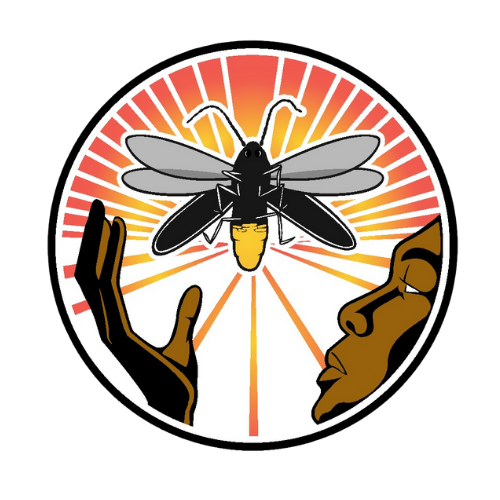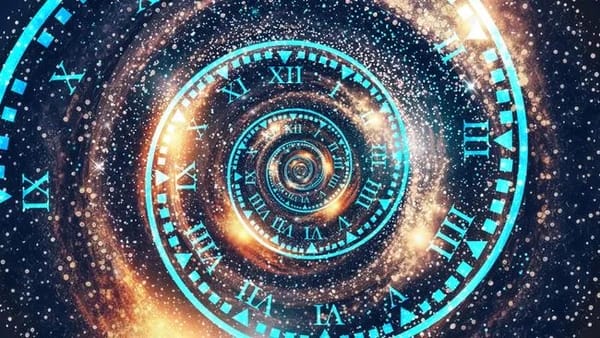Understanding Causality and Sequentiality in Healing
At the heart of causality lies the fundamental connection between cause and effect: the principle that every action produces a consequence, and all events originate from prior causes.


At the heart of causality lies the fundamental connection between cause and effect: the principle that every action produces a consequence, and all events originate from prior causes.


by Ameena Ahmed
My exploration of causality and sequentiality has deepened my insight into both my own being and the complex universe enveloping us. This journey of initiation has cultivated within me a heightened critical awareness, prompting reflections on the true nature of existence. Is existence a binary state—such as life followed by death—or rather a vast continuum embracing diverse modes of being permeating the surrounding space? Within this view, death is merely another form of existence.
At the heart of causality lies the fundamental connection between cause and effect: the principle that every action produces a consequence, and all events originate from prior causes. In contemporary Western thought, which is largely founded on scientific reasoning, causality tends to be interpreted through the frameworks of probability and correlation. However, because Western philosophy often erroneously assumes the existence of empty space, it consequently limits probabilities to what is observable within the material realm.
Conversely, sequentiality, as conceptualized in “Dogon” Tradition and through the teachings of Maakheru, “Neb Naba Lamoussa Morodenibig”, refers to the chronological sequence in which events transpire—an ordered arrangement that helps us comprehend our experiences by linking moments across space and time to form a cohesive narrative. Since time does not exist within the non-material domain, this introduces ideas akin to quantum effects, endowing space-time with a dynamic quality as it unfolds.
Existence encompasses cycles of life, principles, and entities that do not perish. The grasp of sequentiality is fundamentally connected to the notion of Bayuali, or earth energies. Sequentiality offers a structure through which we can navigate life’s intricacies, reminding us that our current state is deeply connected to the past. This awareness encourages me to reflect on the consequences of my own decisions, as well as those of my predecessors; each choice generates waves that resonate through our lives and those around us, weaving a complex web of causality that transcends both the tangible and intangible worlds. Such influence extends well beyond our physical forms, for our bodies are temporary vessels loaned by our Ancestors to contain the Spirits that arrive with specific purposes. Thus, the body is inherently spiritual. Our Ancestors significantly influence our well-being by shaping the unseen aspects of our existence.

Moreover, our relationships with the NTRU (Gods) deities, spirits, and ancestors serve as profound reminders of how intricately our lives are interwoven with forces beyond the visible world. Our relationship with these entities invites reflection on the fact that our existence is shaped by a complex web of karmic influences inherited from those before us, alongside the karma generated through our own thoughts, deeds, and emotions. Central to our behavior is the question of whether we are constructing or destroying. As human beings, we continually strive to control our inner destructive impulses, a struggle associated with the domain of BNT (inner territory of corruption or impurity that must be contained).
When it comes to healing, acknowledging the concept of a human being as an aspect of Earth's Bayuali energy channel is crucial, for there are forces greater than ourselves beyond our control. A traditional healer adopts a holistic view of sequentiality, which opens the door to countless potential origins of illness or karmic disruption. In karma-based traditions such as Hinduism and Buddhism, one's current circumstances—including the conditions into which one is born—are believed to be shaped by actions from previous lives. This concept, often referred to as prenatal destiny, holds that each soul carries karmic imprints that influence the family, environment, and challenges one inherits at birth.
Yet this worldview isn’t fatalistic. Present choices remain powerful agents of transformation. Here, the role of the traditional healer becomes vital: by working through unresolved energies in the non-material realm, they can help realign a person’s path, potentially altering the course of their destiny.
This perspective treats sequentiality as an inherent element of reality and carefully considers the patient's unique situation without oversimplifying. Such healers aim to harmonize energies within the body and are attuned to shifts in the Earth’s energies, requiring humility and spiritual integrity to avoid hasty or unfounded conclusions. Traditional healers approach a patient's life with reverence rather than risk-taking.
In contrast, modern medicine often approaches life in a harsh, mechanical manner, dissecting and experimenting on the patient to determine causes solely on the physical plane. This method tends to assign blame to a condition or diagnosis—like diabetes or heart disease—focusing narrowly on labels rather than holistic understanding. The urgency for a rapid diagnosis reflects a commercialized Western mindset that equates time with money, turning treatment into a gamble aimed at saving time or maximizing profit, relying on a restrictive diagnostic model grounded in authority and control instead of harmony with the natural world.
Traditional holistic healing invites us to see health through a wider lens—one that acknowledges root causes over diagnostic labels. For example, excessive sugar intake may contribute more directly to illness or mortality than the medical label “diabetes” itself. By embracing the principle of sequentiality, we move beyond the confines of Western individualism and scientific rationality, understanding ourselves as woven threads in an expansive cosmic tapestry.